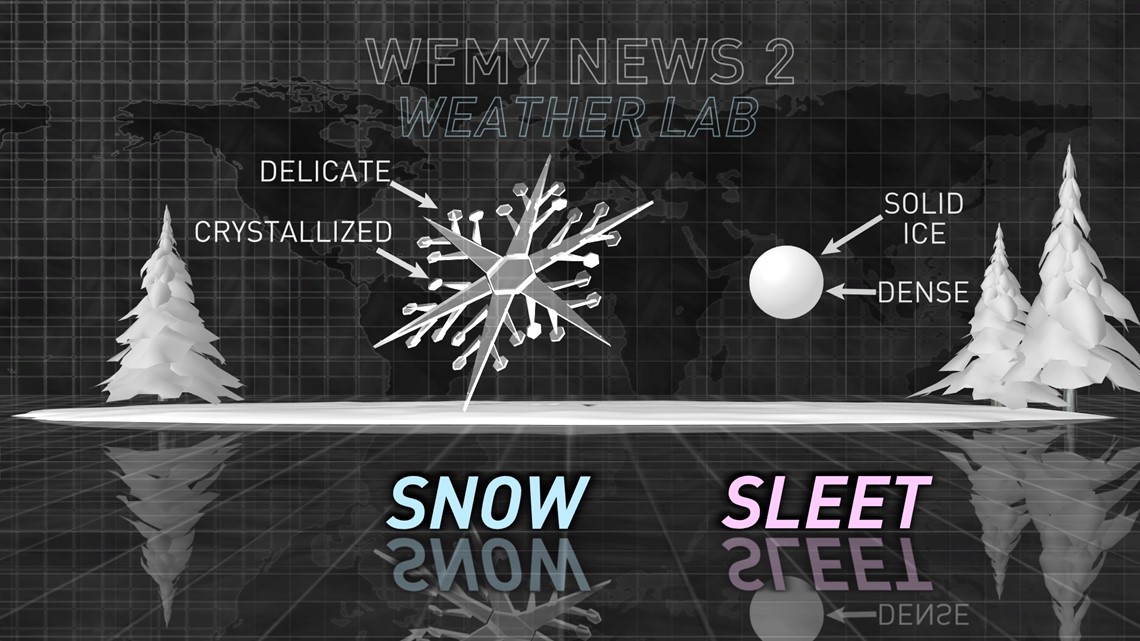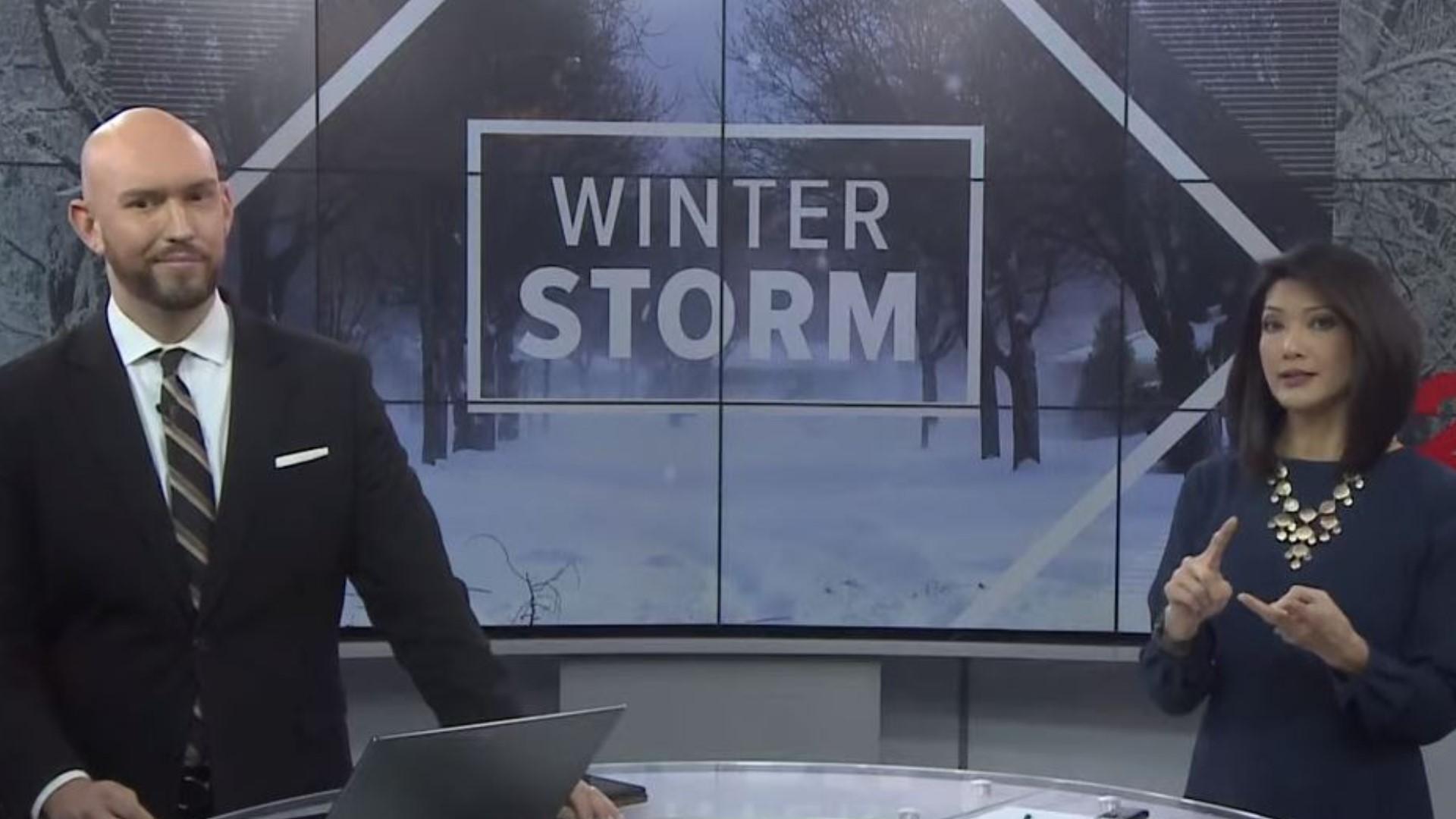GREENSBORO, N.C. — Sunday's winter storm started as a welcomed oasis of white flurries and blanketed much of Central Piedmont with snow. But, mid-morning what was beautiful turned painful, when the snow took an icy transition into sleet. But why couldn't the snow last a little bit longer?
Well, let's imagine the earth's atmosphere from the base of the cloud to the ground is like a slice of cake with many layers. In the case of snow, the entire slice of cake is frozen or below 32 degrees. Sleet is slightly different. In the case of sleet, some layer in the middle of the cake slice was above freezing or greater than 32 degrees. Now, in some instances, that cake layer can be very thick, and the thicker the warm layer the smaller the sleet. Also, if the layer is very thin, the sleet pellets are much larger. When the layer is so large, leaving only a thin layer of freezing temperatures at the bottom, you'll more than likely see freezing rain.


Snowflakes are one-of-a-kind and once you melt a snowflake, you never get the snowflake back. It only re-freezes as ice which is why once these snowflakes fall into warm layers of air they never reform as a snowflake. It's just simply impossible.


Sunday morning, as this area of low pressure churned along the southeast coast, it sent waves of warm air into the upper parts of the atmosphere where we live. Meteorologists reference this phenomenon as the "warm nose." So, although it was a cold day, there was actually warmer air above us high in the sky which helped those snowflakes melt throughout the day. Fortunately, most of that melted snow had enough time to re-freeze well before reaching the ground and freezing as sleet and not as freezing rain.

